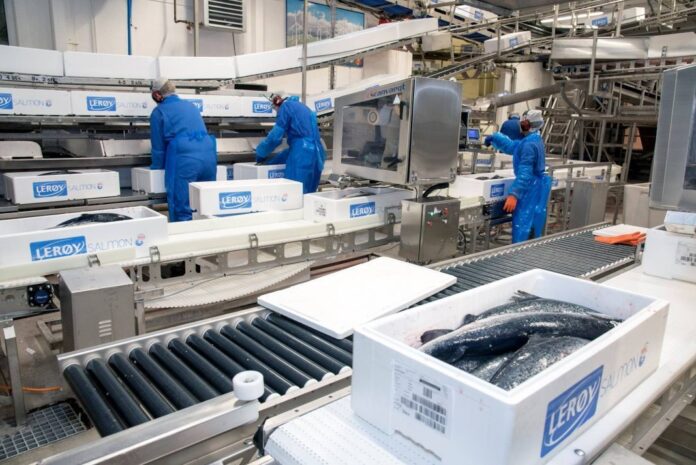Surplus of cheap ‘prodfisk’ fillet continues to warp the spot market.
“Buy on Friday and by Monday, you’re selling at a loss. The current system just isn’t working. There’s an overload of cheap, processed fish, and customers simply aren’t buying what we’re offering. Cheap fish are constantly flooding the market,” a frustrated exporter told SalmonBusiness.
“To secure orders, the going rate in the market is €8.5 – that’s about NOK 92 for the farmer. But the market for premium-quality fish is totally off, price-wise. The prices are too high, forcing exporters to overpay for the scarce premium fish available. Looks like we’ll be facing losses in the first half of the year. It’s just not sustainable.”
What exactly are production fish anyway? The controversial world of salmon grading
Struggle
“Even those customers who specifically need premium-quality fish are having a tough time. It’s obvious. With such a huge amount of cheap production fish and a price gap of NOK 40 ($3.88/€3.52), they’re opting for the processed fish.”
“The market is eerily quiet. Few customers are buying premium fish. I’d say prices have dropped by about five Norwegian kroner. The price for larger fish has decreased even more. Sizes 3-4 [kilos] are now at NOK 100 ($9.70/€8.80) for the farmer, 4-5 sizes are between NOK 104-105 ($10.08-$10.18/€9.15-€9.24), and the 5+ sizes at NOK 109-110 ($10.57-$10.67/€9.59-€9.68),” he explained.
Other exporters agree with these prices.
Challenge
A buyer concurred, “That sounds accurate. There’s no extra space on flights. It’s essentially a price for the largest fish. The market just isn’t working at these prices, neither in Europe nor for air freight. The spot market is challenging and extremely demanding right now.”
“The air freight market is plummeting. They’re now quoting NOK 105 ($10.18/€9.24) for sizes 6-7 kilos. There’s virtually no difference in prices between air freight and European markets.”
“A lot of size variation,” a trader noted. “I’d estimate around NOK 101, 103, and 106 ($9.80, $9.99, $10.29/€8.89, €9.07, €9.33) for sizes three to six kilos.”
Difference
The narrative around cheap ‘production fish’ continues as before.
“Selling whole salmon is tough when competing with fresh fillets. There’s a notable gap between ‘production fish’ and premium quality. It’s difficult to fetch the desired prices for premium quality when it becomes too costly for the industry.”
Some producers told SalmonBusiness they are currently traveling and lack a complete market overview.
“En route to Boston, so I’m not fully in the loop. But my team’s feedback is NOK 105, 111, and 116 ($10.18, $10.76, $11.25/€9.24, €9.77, €10.21) for sizes 3-6 kilos. The market is cautious, with almost nothing sold. We’re likely looking at a low supply next week too,” one farmer said.
SalmonBusiness gathers spot prices for salmon every Friday after lunch, tracking fish to be delivered the following week. This process involves contacting multiple sources up and down the value chain, including farmers, exporters, and importers. At least five independent sources are consulted, though they may not always be publicly disclosed.

